JAAKKO SUOMINEN, ANNA SIVULA, MARIA B. GARDA
University of Turku
Abstract
The purpose of this paper is to explore the emergence and authorization of game cultures heritage in relation to the process of establishing a game museum. The paper follows a crowdfunding campaign for the Finnish Museum of Games (FMG) and analyzes the Facebook and website communication of the campaign: how the online communication constructs and reflects heritage community of digital gaming in Finland and what the role of different credible know-hows is in the construction? We also compare FMG campaign to other game museum campaigns in order to discover differences in presence of the three credibilities (curator, collector, and player) and their connection to the financial and cultural success of the projects.
Keywords: Game history, Museum, Crowdfunding, Heritage community, Emergent heritage, Authorization of heritage
******
The Finnish Museum of Games (FMG) opened to the general public in January 2017. The museum exhibits games in various display spaces, such as period rooms, chronological alleys, and an arcade. It is focused mainly on Finnish (ca. 70 % of the presented titles) digital and non-digital games, as well as Finnish game cultures. However, it also refers to the international context of game history, as it comments on the local reception of foreign titles through, for example, presenting the games that were popular or well received in Finland (on the exhibition, see: Korkeamäki et al., 2017). The museum is located in Tampere and was created thanks to the persistence of many local institutions and game heritage actors, including the Rupriikki Media Museum, Pelikonepeijoonit game collectors group, the University of Tampere, and the City of Tampere.[1]
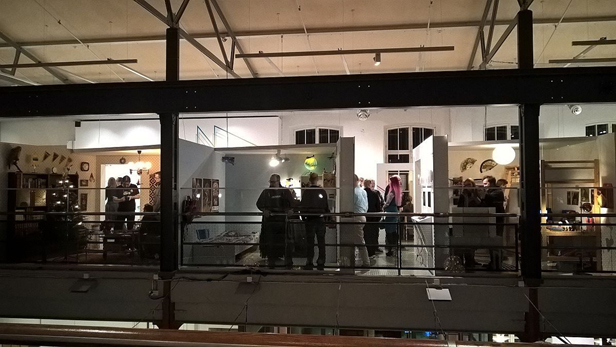
Figure 1. The period rooms at the Finnish Museum of Games. Photo taken on the special opening day for the participators of the crowdfunding campaign, December 2016. (credit: Jaakko Suominen)
In order to support the creation of the museum, the organizing committee launched a crowdfunding campaign in 2015. It was hosted by the crowdfunding service Mesenaatti.me, which is Finland’s first and largest reward-based crowdfunding platform, focused mostly on arts and culture projects (Lasrado and Lugmayr 2013, p. 198). The campaign lasted for six months between March 31 and September 30, 2015, collected €85,860, and engaged over 1100 donors (viz. individual gamers, hobbyists, game researchers, game companies, and game research institutions). The donors got benefits based on the value of their donation, including tickets, badges, seasonal tickets, invitations to a VIP event and t-shirts, etc. There were also copper, bronze, silver, golden and platinum packages available, targeted to companies and organizations and consisting of aforementioned products and some extras. At the time, it was the highest grossing crowdfunding project ever to be completed in Finland.[2] It is important to note that the creation of FMG was not financially dependent on the success of the campaign, but it “was a convenient and almost non-risky way to show beforehand that there is a need for a game museum in Finland” (Korkeamäki et al., 2017).
The foundation of FMG was a turning point in the process of authorization (Roberts and Cohen 2014) of game heritage in Finland. The museum is a symbol of recognition of games and game cultures’ value, as well as a way of institutionalizing their preservation. Mikko Heinonen of Pelikonepeijoonit group and a key figure behind the museum project addresses this in his article (2017a, p. 83) about the FMG:
By the end of June 2017, over 100,000 people[3] had already visited the museum. To me, this is nothing short of a dream come true and further proof that games – both traditional and digital – have become a generally accepted part of culture and worthy of preservation. The time to build a museum for them was now, and so we went ahead and did it!
Our aim in this paper is not only to better understand how (certain) games and game cultures have gained this “should-be-preserved” status. We also deal with wider questions regarding the emergence of a new type of cultural heritage (i.e. digital games) and the formation of a heritage community. The case of the FMG also involves crowdfunding as a modern tool for financing heritage projects. It is a practice that, in our opinion, reflects the interactions between different actors involved in the authorization process, such as public institutions, hobbyists, researchers, etc. In that context, a successful campaign is a reflection of a well-developed heritage community. We argue that for a game museum project to be successful at least three different types of credibilities should be involved: (1) professional (e.g. museum curators, game scholars), (2) hobbyist (e.g. game collector), and (3) gamer (e.g. player experience). The interplay of these credibilities should be communicated to different stakeholders and audiences in order to create a strong heritage community that maintains and develops the museum project in the future.
The paper analyzes the FMG museum project, focusing mainly on the crowdfunding campaign and its online representations. We will address the following research questions: how were the credibilities mentioned visible in the campaign, and how did they support the creation of a heritage community and authorization of emergent heritage? Furthermore, we compare the FMG campaign to other game museum campaigns in order to discover differences in presence and interaction of the three credibilities and their connections to the outcome of the project.
Formation of game heritage community
In previous studies, we have addressed the questions of how history is used within game cultures and how new heritage communities emerged, as well as how one is able to apply concepts such as cultural heritage process and identity work within game cultures (see Suominen, 2011a; Suominen and Sivula, 2016). Here, we summarize some of the findings of our earlier studies and proceed with new theoretical elaborations.
Digital games are still in the early stages of the cultural heritage process and can be identified as emergent heritage. What does it take for cultural heritage to emerge? A trace of the past, an “old thing” such as a computer game from the early 1980s, is never sufficient on its own. Neither is a narrative piece or other item of remembrance, for example a list of “the best early 1980s computer games”. The emergence of cultural heritage depends on a material or immaterial remnant of the past that is valued as historical evidence and recognized as authentic by a historical narrative. Furthermore, a third social component needs to complement these two in order for a process of culture heritage to take place (see Fig. 2). There is no cultural heritage without a community or at least a group of active participants.
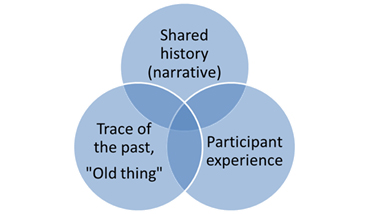
Figure 2. The interconnected three prerequisites of a cultural heritage process (Sivula 2015, p. 66)
The cultural heritage process begins with an attempt to make sense of the past (for more on historicizing games, see: Suominen and Sivula 2016; Suominen 2016). In principle, any object can be identified as a trace of the past, valued as historical evidence, and recognized in the cultural heritage process. The artifacts presented at the FMG include not only internationally celebrated icons of digital entertainment, such as a Space Invaders (Taito, 1978) arcade cabinet, but also objects of everyday life that are connected to the local game histories, such as a Commodore Amiga backpack presented in a period room dedicated to a Finnish demoscene fan of the early 1990s. An immanent trace of the past, when signified by the socially shared interpretations of the past (“histories”) and appropriated by the participant experience of the group, can be elevated to the symbol (or a “place of memory”[4]) for a cultural heritage community. For example, Taneli Armanto’s port of Snake – a game popular since the 1970s – became a huge hit for Nokia 6100 series and a shared gaming experience for early mobile phone users (Ozler, 2005). The game has already become a symbol recognized by various heritage communities. It is especially relevant in Finland, as Nokia is a Finnish company (see Fig. 3).
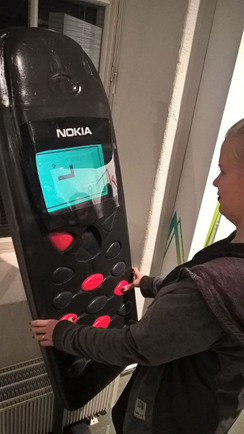
Figure 3. An oversized version of the Nokia Snake game displayed at the opening of the FMG,
December 2016 (credit: Jaakko Suominen)
A cultural heritage community is a local or translocal social group that remembers, recollects, researches, and restores the evidence of its own history to maintain knowledge of the common past, the present togetherness, and the future sense of belonging (see e.g. Durkheim and Mauss, 1903; Bellah et al., 1985, p. 153; Bohman, 2003, pp. 9–24; Assmann, 1992, 293; Schwartz, 1996, pp. 279-282; Sivula, 2014, pp. 44–47; Sivula, 2015, pp. 64–67). Every cultural heritage community works with individual historical identities of its members, as well as the historical identity they all have in common. The identity work can be understood as a certain type of social glue that keeps the members of the group together and gives them a sense of belonging. The museum project and the crowdfunding campaign are, then, examples of this identity work in practice. Cultural heritage emerges and is cultivated thanks to the identity work done at the intersections of historical interpretations, historical evidence, and the self-consciousness of a social group (see Fig. 4).
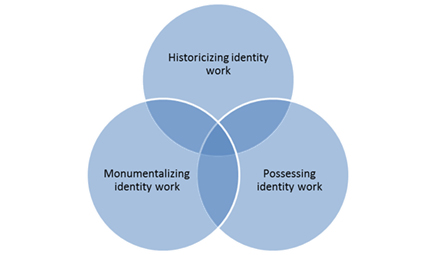
Figure 4. The identity work of a functioning cultural heritage community (Sivula, 2015)
The identity work of a cohesive, functioning cultural heritage community is a triple system of actions. The first step involves (1) historicizing the material and immaterial traces and symbols of the past and the participants’ experiences. In game cultures this process was largely undertaken by participatory historians and retrogaming circles when the collectors started to document the history of games. The second step is centered around (2) monumentalizing the traces, symbols, and interpretations of the past. We analyzed this practice before with regard to the first Finnish commercial computer game (Suominen and Sivula, 2016), but another good example is the canonization of 100 Finnish games for the purposes of the FMG exhibition (see Korkeamäki et al., 2017). Finally, the third phase is focused on (3) possessing the interpretations and traces of the past (Sivula, 2015). These three types of identity work are interconnected in the functioning process of cultural heritage. If one type of identity work is not in operation, or if the identity work is disturbed, the cultural heritage community is not functioning (Sivula, 2015, p. 66).
We argue that the dynamic of a crowdfunding campaign focused on cultural heritage reflects the interactions that are taking place within the relevant cultural heritage community. If the community is functioning well, then the project is more likely to be successful. Needless to say, when the community is at early stages of formation and the identity work is only beginning, a project such as the foundation of a museum might be premature. Therefore, the organizers of the campaign must understand and accommodate the actual and immediate needs of the targeted community. A project whose purpose is not relevant to the status quo and does not contribute to the ongoing cultural heritage process will struggle to find support. Our study shows that the initiatives created outside of the existing heritage community or addressing business goals rather than identity work are not likely to get funded. In a way, a crowdfunding campaign for a game museum project offers unique insight into the interplay of different actors and groups involved in the establishment of an emergent heritage.
The established forms of cultural heritage, such as heritage objects displayed at publicly funded museums or heritage sites that have gained national or international official recognition, are often referred to as the authorized heritage (on authorized heritage discourse, AHD, see: Smith 2006). The foundation of a game museum is a case where emergent, non-authorized and self-authorized elements of cultural heritage are evolving towards an officially authorized heritage. However, it is important to remember that the process does not have to end in the authorization of the emergent heritage (see the analysis of the heritagization of popular music in the UK, Roberts andCohen, 2014).
Crowdfunding of game museums
In the recent years, crowdfunding has proved to be a viable practice that is effectively used by various heritage institutions around the world, including many museums. A crowdfunding campaign can help to expand (Margarone, 2013), restore (Klein, 2016), and digitalize (McKenzie, 2013) existing collections, or to create new exhibitions (Indiegogo, 2013). By far the most financially successful campaign of this sort raised almost $2,000,000 and led to the creation of the Tesla Science Center at Wardenclyffe in Long Island, USA.[5] However, not every crowdfunding campaign is a success story; in fact, most of them fail. The current success ratio of Kickstarter campaigns (as of 2017) is no more than 36 %. Our study suggests that the ratio for game museum projects is even lower. [6]
The majority of crowdfunding campaigns connected to game cultures are focused on game development. In fact, some of the highest-grossing campaigns in Kickstarter history are game projects capitalizing on nostalgia and reviving historical genres (see Gilbert, 2017)[7]. Because modern gaming communities are often dependent on social media, gamers seem to be a perfect target for a crowdfunding campaign. In our study, we overviewed various game museum campaigns that were proposed around the world in the past few years. Some of them were local initiatives and other had ambitions of being national centers for game history preservation. Most of them failed as crowdfunding attempts, but in several cases the long-term goals were achieved regardless of this failure. It is essential to observe how different heritage communities, coming from various local contexts and at various stages of heritage process, were approaching the identity work involved in the creation of a crowdfunding campaign.
In our overview of the museum-like projects focused on games, we reviewed 18 Kickstarter campaigns that took place between 2011 and 2016. The selection of projects was based on a Kickstarter website search using keywords: “game museum”, “video game museum” and “videogame museum”. Then we left out irrelevant projects, such as board games about museums. Almost 85% of the listed Kickstarter campaigns were based in the US and only three projects were from other countries: Canada, UK, and Peru. In order to take into account more instances outside of the US, we hand-picked six examples from local crowdfunding platforms from the Czech Republic, New Zealand, Spain, Poland, and Portugal. This supplementary selection was based on our personal expertise as video game historians; we were only able to reach the projects that were promoted in a limited number of European languages. In total, we have reviewed 26 game heritage crowdfunding efforts, including the FMG. Here we introduce two of the projects more closely, one from the USA, another from Poland.
Most of the projects proposed on Kickstarter were based in the US and focused on the American heritage of video games. The earliest examples we have analyzed are from 2011. Given that Kickstarter was founded in 2009 and the reward-based crowdfunding got momentum in the early 2010s (Freedman and Nutting, 2015), this is relatively early. However, the chronology of game preservation institutionalization in North America (Guins, 2014, pp. 5–6) begins far earlier. For example, the community behind the Videogame History Museum project (Kickstarter, 2011) emerged around the mid-1990s and contributed to the self-authorization of game heritage for many years. The retrogaming group was known for organizing the Classic Gaming Expo (1999–2014) which, according to its founders, was “the world’s first and largest event paying tribute to the people, systems and games of yesteryear” (Classic Gaming Expo, 2017). The credibility earned after almost 15 years of maintaining a traveling exhibition and on-going collaborations with the game industry[8] paid off: the project has raised its initial goal of $50,000, and has involved 356 backers. The donors were (mostly) from various parts of the US (79%), but the remaining donors were spread across the world, including two from Finland.
The Videogame History Museum project was launched on Kickstarter on 4 July 2011. The starting date of the campaign – Independence Day in the US – seems not to be a coincidence, as the project promotional materials directly referred to the preservation of Americana (Kickstarter, 2011). This national game history focus is visible in the continuous identity work of this heritage community. The campaign promised to establish a permanent museum in eight years and the creators kept their word. When the institution was finally opened to the public in Frisco (Texas) in 2016, it was called the National Museum of Videogames[9], not the Videogame History Museum, as it was labeled during the Kickstarter campaign. It is worth noticing that one national museum related to game cultures already exists in US – the National Museum of Play, formerly STRONG[10]. However, given the size of the country itself, there is space for many institutions operating not in geographical but thematic proximity. For example, in California there are many museums concerned with games, including two private ones that used crowdfunding with mixed results: the Museum of Art and Digital Entertainment and the Museum of Pinball.
Even though Kickstarter is mostly a North-American platform, some of the museum projects – as we have already mentioned – were based in other countries. Interestingly enough, all of them failed. Even though the language barrier could have been a major factor only in one of the cases (i.e. Peru), it still seems that the involvement of a local crowdfunding platform is important. Kickstarter proved to be, at least in relation to the type of campaigns we have reviewed, a regional (US-centric) platform. Even though retrogaming communities are in many ways translocal, a museum project serves mostly the local heritage communities.
Another case involves multiple crowdfunding efforts to support the establishment of a video game museum in Wrocław, Poland. The chronology of the game history in the countries of the former Eastern Block differs from the dominant narrative of the US game industry. As a result, the heritage process and the authorization of video game heritage have a different timeline too. Retrogaming communities that could be compared to the Classic Gaming Expo networks in US started to emerge in Poland in the late 2000s. Since then, the Polish retrogaming scene has developed a very active and locally diverse community. There are traveling museums[11] as well as permanent exhibitions – committed partially[12] or entirely to video games[13]. Other permanent projects are under development[14]. However, only in Wrocław was crowdfunding employed as a funding tool.
In the past few years, there were as many as four crowdfunding campaigns to establish a video game museum in Wrocław. The first three were created in 2014 and 2015 by a young group of enthusiasts, not known in the national retrogaming circles, and their actions sparked a considerable amount of controversy. Their critics commented on the lack of experience and the absence of pre-existing collections (e.g. Yeti, 2015). Every iteration of the project was dependent on acquiring the necessary artifacts and resources. Even though the funders managed to get the support of several Polish game development companies and numerous web portals, there was no collaboration with the existing heritage community. Ultimately, after very little financial support for each of the campaign iterations, the project was cancelled. This outcome could be seen as a consequence of the lack of credibility in all of the three areas we have outlined. There was limited institutional and retrogaming expertise among the parties that created these campaigns, and as such these campaigns did not represent sufficient value for gamer communities, local or otherwise, to fully fund them.
Wrocław is also the home city to one of the oldest and most active retrogaming groups in Poland, the so-called Retrogralnia. In 2017, the group organized a very successful crowdfunding campaign to support the development of the Museum of Games and Computers of the Past Era. The goal of the campaign was more realistic, and backers gave extra funds for the refurbishment of a new permanent location for the group’s existing collection. The project’s narrative and presentation used both the 8-bit nostalgia and the 1980s nostalgia (see Boym, 2001; Garda, 2014b) to appeal to wider audiences. The emergent Polish game heritage has a significant and devoted community, but it is only starting to be recognized by official heritage institutions. Even though there has been no state institution that is systematically involved in historiographical operations, apart from the statutory preservation practices undertaken by various libraries (Garda, 2014a), many museums are more and more interested in digital games exhibitions. Undoubtedly, the success of the Polish gaming industry and its main export product – the Witcher (2007–) franchise, has significantly influenced the social perception of the medium and, at the same time, its cultural value.
The international benchmarking of game museum projects has shown that a crowdfunding campaign cannot replace the heritage community building process. If we look closely at the history of game culture related crowdfunding projects, we can observe that the most successful ones were often aimed at a pre-existing community. This seems to be true both for sequels of well-known titles, such as Wastelands 2 (inXile Entertainment, 2014), or new products, such as SUPERHOT (Superhot Team, 2016). If the campaign is supposed to build a supporting community, it is already too late. The majority of failed initiatives were centered around an individual collector or a local retrogaming network with a motivation to share their existing collection with wider audiences. Usually, the campaign was meant to spark the interest of gamers and non-gamers within a city or region. But without professional campaign design and management, as well as a supporting community, those crowdfunding attempts were prone to failure from the beginning. The least-supported projects were also clearly overambitious, trying to create a museum from scratch, starting from the acquisition of a gaming platform. Some of the projects were commercial endeavors looking for financial support to refurbish their facilities or make other improvements.
In the case of the FMG, the initiative was not only supported by a diverse heritage community but by key actors that were involved in every stage of the campaign preparation process. The hobbyist base of the museum project and the campaign was strong. Pelikonepeijoonit (« game machine rascals/devils, http://pelikonepeijoonit.net/) collector collective was established in 1999, when Mikko Heinonen, Ville Heinonen and Manu Pärssinen decided to combine their game hardware and software collections, which they had started to form many years before, and exhibit them online as The Arctic Console Museum. The name was partially humorous, but it was also an example of self-authorization of heritage and hobbyist heritage discourses (c.f. Suominen, 2013). The Pelikonepeijoonit group was open to collaborations with various institutions and took part in many museum exhibitions and other events in the 2000s, such as Pelaa! in Salo Art Museum 2009–2010, and Finnish Games Then and Now (2012) in Rupriikki Media Museum Tampere (see Heinonen, 2017a; Naskali et al., 2013). During these collaborative efforts, the group has strengthened their connections with game scholars and museum professionals. They also have strong networks with demoscene and game journalism actors, as well as with game industry.
Finnish Museum of Games Crowdfunding Campaign in Social Media
In order to understand how the presence of different actors and credibilities was introduced and presented to the potential backers and members of game heritage community, we have analyzed the publicizing work (Hui et al., 2014) of the FMG crowdfunding team. Our data set consists of 221 Facebook posts collected during the campaign itself and right after it, provided to us by the project team. The first post was published on 30 March 2015, and the last on 20 November 2015 (50 days after the campaign’s official end). We have divided the posts thematically in groups representing various credibilities and typical ways of historicizing games. The majority described the general progress of the campaign – there were 79 such posts, others contained information on Finnish game history (38), donors, including announcements of large donations (36), crowdfunding meta, including other campaigns and crowdfunding in general (21), exhibition activities (21), media coverage, such as links to press articles about the museum (20), collection work (19), game history in general (14), and contests for the audience (10).
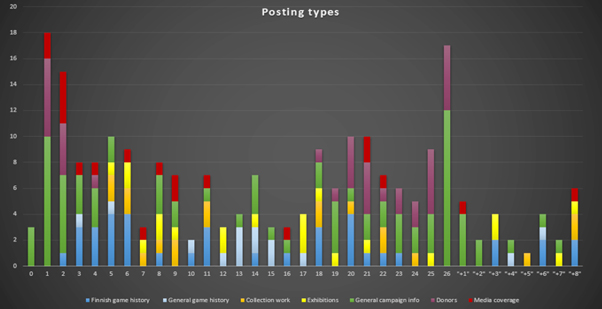
Figure 5. Number of FB post by content type (General campaign info/ Finnish game history/ General Game History/ Collection work / Exhibitions/ Donors/ Media coverage/ Crowdfunding meta) per campaign week and right after the campaign
The thematic focus of status updates was changing in time: for example, information on donors was published mainly at the beginning and during the later period of the campaign (see Fig. 5). The timing of publishing reflects the U-shaped pattern of contributions during a typical campaign, “[the] backers are more likely to contribute to a project in the first and last week as compared to the middle period of the funding cycle” (Kuppuswamy and Bayus, 2015). In general, negotiations with the biggest donors were underway ahead of the launch date and relevant updates were ready in advance as a part of publicizing strategy. For example, two donations from Mikko Heinonen’s own companies (i.e. Alasin Media and Skrolli computer hobbyist magazine) were announced on the first day of the campaign (Heinonen, 2016).
Another substantial group of posts was aimed at historicization of games, often evoking nostalgia. Heinonen explains that this approach was premeditated, as it proved to be helpful in earlier crowdfunding campaigns focused on video game production. He points out that the introductory video, the most visible part of the campaign, as well as some descriptions of the goals, featured a nostalgic narrative (Heinonen, 2017b). Even though the campaign was intended to engage with gamers of all ages and various interests, including board games and miniature wargaming, its success was still expected to depend on the involvement of the “30–40 years old game enthusiasts” (Nylund, 2016).
In our earlier studies, we have observed the role of nostalgia in digital game marketing and product development (see Garda, 2013; Suominen, 2008; Suominen et al., 2015). However, we argue that in the case of the FMG crowdfunding campaign, the use of game history discourse served other purposes as well. The updates addressing the issues of game objects preservation, donations to the museum or its construction, information on planned events and mini exhibitions, presented the curatorial and professional credibility of the project team. Furthermore, the references to Finnish and international game history, such as overviews of selected titles, game devices or key historical figures, were intended to educate the audience and show the game cultural expertise of the organizing committee.
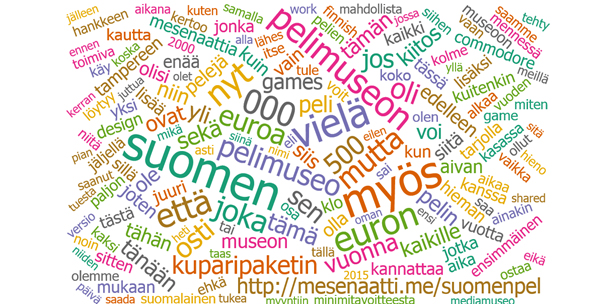
Figure 6. Word cloud representing the FMG’s campaign’s social media presence
We have further analyzed the discourse of the campaign’s social media presence. The first visualization is based on the previously used Facebook data set and reveals two recurrent main themes: the Finnishness of the project and its financial goals (see Fig. 6). The tags suomen (“Finnish”) and pelimuseo (“game museum”) were the most frequent, followed by the references to actual donors, the number of donations, and purchasing of donation packages. Other two word clouds are based on the text data collected from the campaign’s website that was linked on Facebook. The first visualization (see Fig. 7) represents descriptions of personal gaming histories of the museum team key members and the second (see Fig. 8) stories about their contemporary gaming experiences. It is not surprising that the first one is centered around the past, as the main tags are oli (“it was”) and olivat (“they were”), and the second is about the present – olen (“I am”). The first visualization consist of several major tags, including kanssa (“with somebody”), Commodore, paljon (“a lot”). In general, it illuminates the social context of playing various types of games, not only with computer platforms, such as Commodore 64 and Amiga, but also about board games. The word cloud also consists of references to remembering and nostalgia.
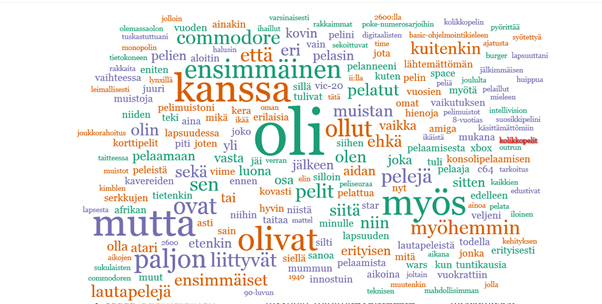
Figure 7. Word cloud representing the personal gaming histories of the museum team key members
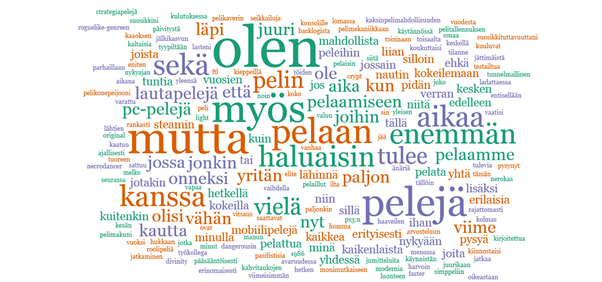
Figure 8. Word cloud representing the contemporary gaming experiences
of the museum team key members
The cloud related to the present-day experiences underlines the importance of social activity. The project team members described their wishes to play more using words and expressions such as enemmän (“more”), aikaa (“time”), haluaisin (“I would like to”), because they were not able to play as much as they would like to at the time. Therefore, their early life is presented in a nostalgic manner, as a period when they had more time to play games. This perception is also visible in other oral historical sources regarding gaming (Suominen 2011b).
Finally, we have analyzed the list of backers in order to investigate the composition of the emerging game heritage community. The data set provided by the museum team consisted of the campaign’s public records and did not include the number of donations or the exact time when particular backers supported the campaign. Unfortunately, it also didn’t include donors’ places of residence, which would have been useful information since the campaign was about a museum in a certain place, not about a game or another similar product. The affiliation of backers was determined based on a close reading process involving three experts (an FMG project team member, a game history researcher, and a demoscene hobbyist) and the results were cross-checked. However, because not every backer was identifiable due to personal privacy decisions (such as the use of a nickname), as well as the fact that one person could be in several groups, the following numbers should not be considered as a precise estimate. From the list of 830 backers we have identified 631 male names and 200 female names, 83 families, 70 pseudonyms/nicknames, 28 companies/organizations, 28 game researchers or game studies students, 22 demoscene members, 15 recognized game developers, 15 game journalists, 14 game collectors, 7 other game professionals (e.g. event organizers, and game educators), 2 politicians (members of the Finnish parliament who actively brought up their gaming interests). This overview reveals not only the social and cultural structure of the game heritage community but also its gender balance. In the next section, we will try to establish how the FMG campaign succeeded in attracting different potential groups and individuals.
Conclusion
Our study suggests that a crowdfunding campaign for a game museum project should incorporate certain practices in order to be successful. The success in this case is only partially dependent on the financial outcome of the campaign. Other factors, such as the acknowledgement of different actors involved in the heritage process (such as public institutions, game developers and gamer networks) and the engagement of the heritage community (i.e. historical awareness), are in many respects even more important. The campaign may fail to reach its financial goals but if it still manages to commit the key participants to the long-term goals (i.e. the authorization of game heritage) and to develop a relevant heritage discourse, these accomplishments may prove to have even more enduring consequences.
As mentioned at the beginning, our case shows that a successful game museum project requires at least three types of credibility from its key participants. These are: 1) curator (museum institutional and professional), 2) collector (preservation and participatory history), and 3) gamer (player experience) credibilities. These three elements do not necessary require three types of independent actors involved because individuals can have hybrid roles and backgrounds.
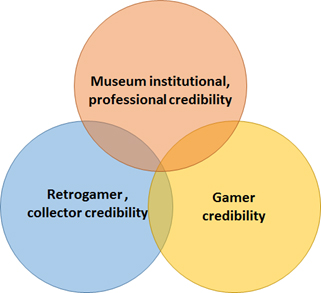
Figure 9. Three types of credibility involved in a game cultural heritage project.
The institutional or curatorial credibility of the museum means that the professionals involved have a proper academic education suitable for handling issues related to game preservation. This can mean, for example, a degree in history, information sciences, media studies, or a focus on digital cultures. Some curators usually already have a position in a memory institution, or at least established connections with academia and a memory institution interested in game cultures. All of these factors can be seen in the case of the FMG. The academic expertise is articulated on the project’s website, where the museum staff and key actors were introduced to the public. From the perspective of other actors involved, the participation of professionals improves the broader social perception of video games (i.e. their cultural status and authorization).
Because digital game preservation and collecting is started mainly as a hobbyist practice (e.g. Suominen et. al, 2015), it is fruitful for a museum project to have close ties to these hobbyist and retrogaming circles (see Stuckey and Swalwell, 2014; Stuckey et al., 2015). In the Finnish case, the museum has been grounded in the long-lasting collaboration with the Pelikonepeijoonit group. This ensured partnership in building the museum’s collection and was also essential in establishing connections with other collectors, game preservationists, game journalists, game developers, and the gaming industry in general. Pelikonepeijoonit group had already had many years of experience in collaborating with various other Finnish museums and in organizing temporary exhibitions. Therefore, the FMG as a new museum project seemed to be a logical next step in exhibiting digital game history (Heinonen, 2017a).
Gamer credibility refers to the ways in which the key actors behind the museum project reveal their own gaming histories and gaming experiences. That is visible, for example, in personal introductions on the FMG’s website. We argue that this kind of testimonial commitment has two important functions. On the one hand, it shows how museum professionals are part of the ludic community. On the other, these narratives and practices involving game (historical) artifacts point out to a variety of relationships with games and are there to show that practically everybody is a gamer, in one way or another. Therefore, the message behind the testimonies is that the heritage community of the Finnish Museum of Games is inclusive of everyone.
This study has been a preliminary attempt to analyze game heritigization process from the perspective of crowdfunding campaigns. In the future, we would need more detailed studies from the donor viewpoints: what has been their main motifs for participating in campaigns, how they decide the amount of their fundraising contribution and how they interact with the campaign, products, and other donors.
Acknowledgements
We are grateful to the Kone Foundation for funding the Kotitietokoneiden aika ja teknologisen harrastuskulttuurin perintö [Home Computer Era and the Heritage of Technological Hobby Culture] project, and the Academy of Finland for funding Ludification and the Emergence of Playful Culture (decision #275421) and Centre of Excellence in Game Culture Studies (decision #312396). We thank also Niklas Nylund and Markku Reunanen for their help in analyzing the data, Outi Penninkangas for the information regarding FMG, Stanisław Krawczyk, and two anonymous reviewers for their valuable comments.
References
AMOUGOU, M. (2012), “Les processus de «patrimonialisation» et réflexivité”, in Khaznadar C. (ed.) Le patrimoine, oui, mais quel patrimoine? Arles, Actes Sud, pp. 205–236.
ASSMANN, J. (2005), Das kulturelle Gedächtnis: Schrift, Erinnerung und politische Identität in frühen Hochkulturen. Munich, Verlag C.H. Beck.
BELLAH, R., BELLAH, R. N., MADSEN, R., SULLIVAN, W. M., SWIDLER, A., and TIPTON, S. M. (2006), Habits of the Heart: Individualism and Commitment in American Life. Berkeley, Univ. of California Press.
BOHMAN, S. (2003), ”Vad är museivetenskap och vad är kulturarv?”, in Palmqvist, Lennart, Bohman, Stefan (2003) Museer och kulturarv, Stockholm, Carlssons, pp. 9–24.
BOYM, S. (2001), The Future of Nostalgia. New York, Basic Books.
CLASSIC GAMING EXPO (2017). Classic Gaming Expo [Profile description]. Retrieved from: https://twitter.com/cgexpo.
DURKHEIM, É. & MAUSS, M. (1903), “De quelques formes primitives de classification: contribution à l’étude des représentations collectives.” Année sociologique 6, pp. 1–72.
FREEDMAN, D. M., and NUTTING, M.R (2015). Equity Crowdfunding for Investors : A Guide to Risks, Returns, Regulations, Funding Portals, Due Diligence, and Deal Terms, John Wiley & Sons, Incorporated, 2015. ProQuest Ebook Central, https://ebookcentral-proquest-com.ezproxy.flinders.edu.au/lib/flinders/detail.action?docID=1895666.
GARDA, M.B. (2014a). “Nostalgia in retro game design”, DiGRA ’13 – Proceedings of the 2013 DiGRA International Conference: DeFragging Game Studies, August, 2014, Volume 7. Retrieved from: http://www.digra.org/wp-content/uploads/digital-library/paper_310.pdf
GARDA, M.B. (2014b). “Gry komputerowe jako dziedzictwo kulturowe”[Computer games as cultural heritage] , Replay. The Polish Journal of Game Studies 1 (1), pp. 119–128. Retrieved from: http://dspace.uni.lodz.pl:8080/xmlui/bitstream/handle/11089/8883/12%20Garda.pdf.
GARDA, M.B. (2016), “Nowa historia gier wideo?”[New history of video games?], Ekrany 2 (30), s. 106-109.
GILBERT, A.S. (2017), “Crowdfunding Nostalgia: Kickstarter and the Revival of Classic PC Game Genres”, The Computer Games Journal, Volume 6, Issue 1–2, pp. 17–32.
GUINS, R. (2014). Game after: A cultural study of video game afterlife. Cambridge, Mass: MIT Press.
HEINONEN, M. (2012), ”Skrolli-artikkeli: Kickstarter – pelinteon vallankumous vai tyhjien lupausten valintamyymälä?”, Taloussanomat Online 21.12.2012, Retrieved from: http://www.is.fi/taloussanomat/art-2000001780383.html
HEINONEN, M. (2016, June 16), E-mail interview with Jaakko Suominen.
HEINONEN, M. (2017a), “From our Garage to the Finnish Museum of Games”, Skrolli, international issue, 1/2017, pp. 82-83.
HEINONEN, M. (2017b, April 1), Facebook interview with Maria B. Garda.
HUI, J. S., GREENBERG, M. D. and GERBER, E. M. (2014, February), “Understanding the role of community in crowdfunding work”. In Proceedings of the 17th ACM conference on Computer supported cooperative work & social computing, pp. 62-74. DOI: 10.1145/2531602.2531715.
INDIEGOGO (2013), “AMPED by Science World BC”, Retrieved from: https://www.indiegogo.com/projects/amped-by-science-world-bc#/.
KICKSTARTER (2011), “The Videogame History Museum”, Retrieved from: https://www.kickstarter.com/projects/vghmuseum/the-videogame-history-museum.
KICKSTARTER (2017), “Stats”, Retrieved from: https://www.kickstarter.com/help/stats [Access: 2017, August 1].
KLEIN, C. (2016, March 8), “Kickstarter Campaign Begins to Return PT-305 to Water”, Retrieved from: <http://www.history.com/news/kickstarter-campaign-begins-to-return-pt-305-to-water>.
KORKEAMÄKI, S.; WIIK, E.; NYLUND, N. & OJANEN,R. (2017), “Suomen pelimuseo – joukkorahoituskampanjasta museonäyttelyksi”, Ennen ja Nyt 1/2017, Retrieved from: <http://www.ennenjanyt.net/2017/01/suomen-pelimuseo-joukkorahoituskampanjasta-museonayttelyksi/>.
KUPPUSWAMY, V., & BAYUS, B. L. (2015, November 2). Crowdfunding creative ideas: The dynamics of project backers in Kickstarter. UNC Kenan-Flagler Research Paper No. 2013-15. <http://dx.doi.org/10.2139/ssrn.2234765>
LASRADO, L. A., and LUGMAYR, A. (2013), “Crowdfunding in Finland: A New Alternative Disruptive Funding Instrument for Businesses”. In Proceedings of International Conference on Making Sense of Converging Media. ACM, pp. 194-201.
MARGARONE, C. (2013), “Crowdfunding a Palazzo Madama. Scelte, strategie,analisi dei risultati”, Palazzo Madama Studi e notizie, anno III, numero 2 / 2012-2013, pp. 120–136.
McKENZIE, H. (2013, November 8), “Smithsonian turns to crowdsourcing for massive digitization project”, Retriewed from: <https://pando.com/2013/11/08/smithsonian-turns-to-crowdsourcing-for-massive-digitization-project/>.
NASKALI, T., SUOMINEN, J., and SAARIKOSKI, P. (2013), “The Introduction of Computer and Video Games in Museums – Experiences and Possibilities”, In Making the History of Computing Relevant. Edited by Arthur Tatnall, Tilly Blyth & Roger Johnson. IFIP WG 9.9 International Conference, HC 2013, London, UK, June 2013. Revised Selected Papers. Heidelberg, Springer, pp. 226–245.
NORA, P. (1996), Realms of Memory. Rethinking the French Past. Volume 1. Conflicts and Divisions. New York, Columbia University Press.
NYLUND, N. (2016, June 16), Email interview.
OZLER, L. (2005, June 16), Taneli Armanto: Snake Creator Receives Special Recognition, Dexigner, Retrieved from: <https://www.dexigner.com/news/4785>.
PENNINKANGAS, O. (2018, January 25), Email interview.
PROCTOR, N. (2010), Digital: Museums as Platform, Curator as Champion, in the Age of Social Media, Curator: The Museum Journal, 53/1 Wiley-Blackwell, (January, 2010):36.
ROBERTS, L. & COHEN. S.(2014), “Unauthorising popular music heritage: outline of a critical framework”, International Journal of Heritage Studies, 2014 Vol. 20, No. 3, 241–261, <http://dx.doi.org/10.1080/13527258.2012.750619>
SCHWARTZ, B. (1996), “Introduction”. The expanding Past. – Qualitative Sociology 9 (3) Fall, pp. 275–282.
SIVULA, A .(2014), “Corporate History Culture and Useful Industrial Past”. Electronic Journal of Folklore 57, 29–54. <DOI:10.7592/FEJF2014.57.sivula>.
SIVULA, A. (2015), “Tilaushistoria identiteettityönä ja kulttuuriperintöprosessina”. Kulttuuripolitiikan vuosikirja 2015, Jyväskylä, Kulttuuripolitiikan seura ry., pp. 56–69.
SIVULA, A. & SIRO, S. (2015), “The Town Scale Model as an Artefact and Representation of the Past”, Finskt Museum 2013-2015. Helsinki, Suomen muinaismuistoyhdistys ry, pp. 207–221.
SMITH, L. (2006), Uses of Heritage. London: Routledge.
STUCKEY, H., RICHARDSON, N.,SWALWELL, M.,de VRIES, D. (2015). “What retrogamers can teach the museum” In: MWA2015: Museums and the Web Asia 2015, Melbourne, Victoria, 5-8 October 2015. Retrieved from: https://mwa2015.museumsandtheweb.com/paper/what-retrogamers-can-teach-the-museum/
STUCKEY, H. and SWALWELL, M. (2014). “Retro-computing community sites and the museum”, In: Handbook of Digital Games, Wiley-IEEE Press, United States.
SUOMINEN, J. (2008), “The Past as the Future? Nostalgia and Retrogaming in Digital Culture”, Fibreculture, issue 11 (digital arts and culture conference (perth) issue), 2008, Retrieved from: < http://journal.fibreculture.org/issue11/issue11_suominen.html>.
SUOMINEN, J. (2011a), “Game Reviews as Tools in the Construction of Game Historical Awareness in Finland, 1984–2010: Case MikroBitti Magazine.” Think, Design, Play – Digra2011 conference. Utrecht School of the Arts, Hilversum 14–17 September 2011. Retrieved from: http://www.digra.org/dl/db/11310.15375.pdf.
SUOMINEN, J. (2011b), “Hurma, himo, häpeä ja hylkääminen. Kaarroksia konesuhteissa.” [From Fascination to Rejection: Life-Cycle of Techno Affairs] Digirakkaus II. Toim. Petri Saarikoski, Ulla Heinonen, Riikka Turtiainen. Kulttuurituotannon ja maisemantutkimuksen koulutusohjelman julkaisuja XXXI. Turun yliopisto, Pori, pp. 17–32.
SUOMINEN, J. (2012), “Mario’s legacy and Sonic’s heritage: Replays and refunds of console gaming history”, Proceedings of DiGRA Nordic 2012. Raine Koskimaa, Frans Mäyrä, Jaakko Suominen (Eds.) Tampere, University of Tampere. Retrieved from: http://www.digra.org/dl/display_html?chid=http://www.digra.org/dl/db/12168.57359.pdf.
SUOMINEN, J. (2013), “Retrogamers’ Communal Memory and Discourses of Digital History.” Memory and Meaning: Digital Differences. Edited by Tim Fawns. Inter-Disciplinary Press, Oxford, pp. 17–35.
SUOMINEN J. – REUNANEN, M. – REMES, S. (2015), ”Return in Play: The Emergence of Retrogaming in Finnish Computer Hobbyist and Game Magazines from the 1980s to the 2000s”, Kinephanos – Canadian Journal of Media Studies, <https://www.kinephanos.ca/2015/emergence-of-retrogaming/>
SUOMINEN, J. (2016), “How to Present the History of Digital Games: Enthusiast, Emancipatory, Genealogical and Pathological Approaches”, Games & Culture, Published online before print, June 20, 2016, doi: 10.1177/1555412016653341.
SUOMINEN, J. & SIVULA, A. (2016), “Participatory Historians in Digital Cultural Heritage Process — Monumentalization of the First Finnish Commercial Computer Game”, Refractory – Australian Journal of Entertainment Media, volume 27, 2016 – Themed issue: Born Digital Cultural Heritage. Retrieved from: http://refractory.unimelb.edu.au/2016/09/02/suominen-sivula/.
YETI (2015, July 2). “Jak (nie) otwierać Muzeum Gier Wideo?” [How (not) to open a video game museum?], Retrieved from: http://yetiograch.pl/gry/jak-nie-otwierac-muzeum-gier-wideo/.
Notes
[1] Full list of sponsors: http://vapriikki.fi/en/pelimuseo/tukijat/.
[2] In January 2018, it has been surpassed by the Rally Museum for Finland campaign (€86, 420) and Finnish Motorbike museum’s extension project (€108, 100).
[3] In fact, Heinonen refers merely to the whole number of visitors in Vapriikki museum center that consists of several museums and exhibitions, and where it is able to stay with a common ticket. The total number of Vapriikki exhibition visitors in 2017 was 198,345, and the FMG personnel estimate that few tens of thousands of them visited also in game museum. According to Outi Penninkangas 2852 persons also participated in special events (41 events together) organized by game museum in 2017.(Penninkangas 25.1.2018.)
[4] The French historian Pierre Nora coined this concept to describe the symbolic tools of the social practice of local historical memory (see Nora 1996, pp. xviii-xix, xxiii-xxiv, 1-3 and 14-15).
[5] Two campaigns grossed in total 1.88 M US Dollars in order to purchase the site of Tesla’s laboratory. See: http://www.teslasciencecenter.org/.
[6] The success ratio for the campaigns in the selected group was 23 %, and in the Kickstarter set it was slightly higher – 29 %.
[7] For example, titles such as: Broken Age (Double Fine, 2014) or Torment: Tides of Numenera (inExile, 2017).
[8] For example, the support of many industry pioneers and participation in the Electronic Entertainment Expo and Game Developers Conference.
[9] See: http://nvmusa.org/.
[10] See: http://www.museumofplay.org/.
[11] For example, Dawne Komputery i Gry (www.dkig.pl), Retrogralnia (www.retrogralnia.pl) or Digital Dreamers (Garda 2016).
[12] Muzeum Historii Informatyki i Komputerów [Museum of Computing History] in Katowice
[13] Muzeum Historii Konsol Video [Museum of the Video Game Console History] in Karpacz.
[14] Museum of Video Games in Warsaw and the Centre for Comics and Interactive Storytelling in Łódź.
